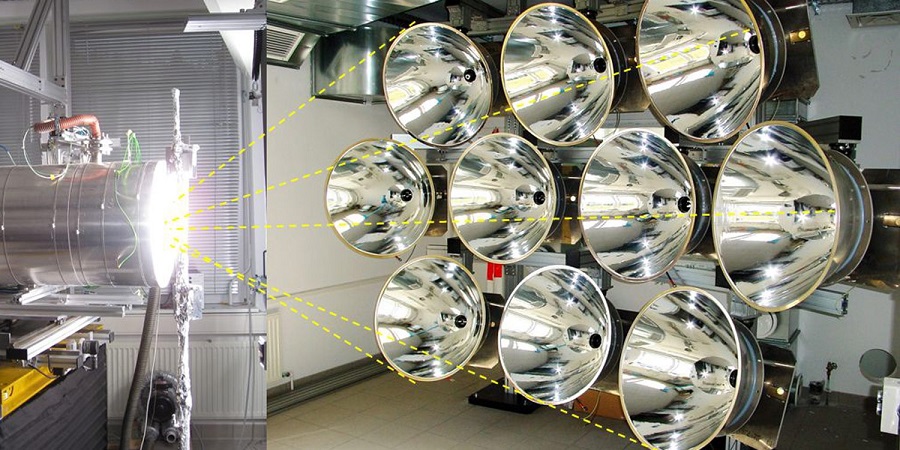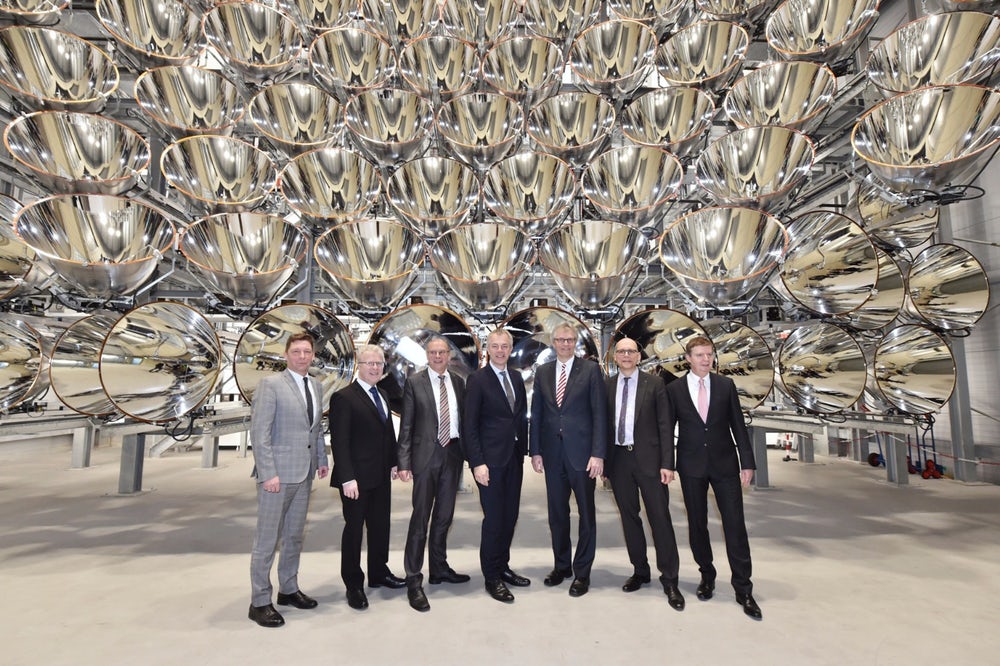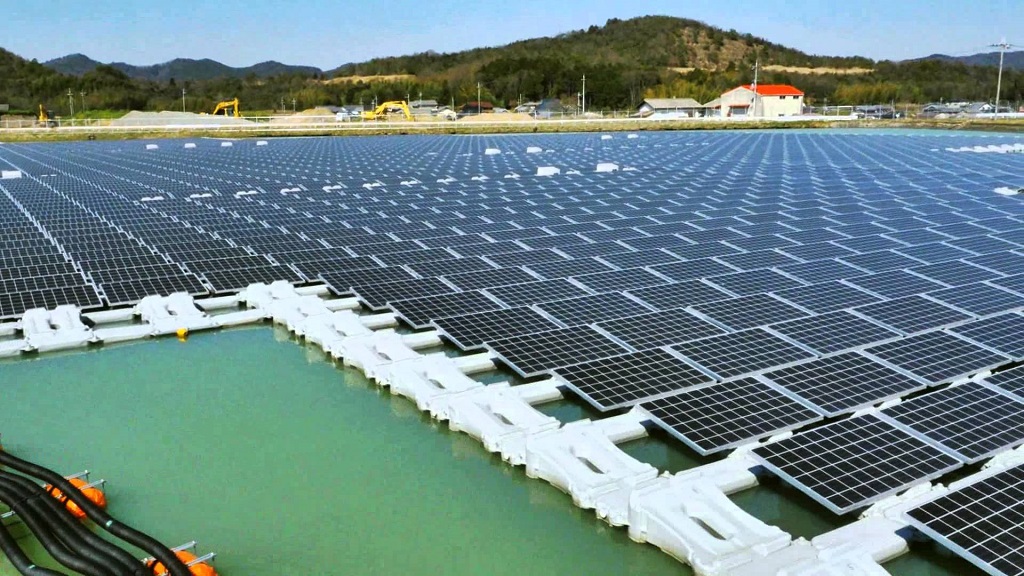Scientists in Germany have turned on what is regarded as the world’s largest artificial sun which is the first of its kind with the aim of being used to create useful hydrogen in the future.
This invention which is located in Jülich, Germany, is operated by the German Aerospace Center (DLR). Referred to as the “
Referred to as the “Synlight”, the artificial sun uses 149 xenon lamps to recreate the light from the Sun onto a single point, vaporising water and producing hydrogen and oxygen. Interesting right?
See Also: Teaching Robots To Trust: Now They Want To Start Breaking The Hearts Of Bots
In a three-story building, it towers 14 meters (45 feet) high and 16 meters (52 feet) across, and produces temperatures of up to 3,000°C (5,400°F) focused on a single spot 20 by 20 centimetres (8 by 8 inches). This particular test lasted just 15 to 20 minutes, producing a tiny amount of hydrogen, but the lamps can theoretically be run continuously for hours or even a day.

As part of testing, it remained on for just 15 to 20 minutes, during which it produced a tiny amount of hydrogen, but the lamps can theoretically be run continuously for hours or even a day.
According to Dmitrij Laaber, a research engineer involved in the project while speaking to IFLScience said the test has been on for the past two months.
With149 High-power emitters, the lamps have an output of 350 kilowattsMore so, they are expected to produce 10,000 times the intensity of solar radiation on Earth. As noted by IFL Science, its spectrum of UV radiation is similar to that of the Sun. When focused onto a metal sheet in a small reactor device, it splits water up into hydrogen and oxygen.
Another thing they note is that when focused onto a metal sheet in a small reactor device, the artificial sun can split water up into hydrogen and oxygen.
If everything works as expected, which is more than likely, it will lead to the production of Hydrogen which is an incredibly useful element as it is a source of fuel with no carbon emissions.
This will make for an easy source of hydrogen which mostly appears in some compounds before it is being separated or created synthetically with machines.
In fact, Hydrogen has been described as the fuel of the future because it burns without emitting carbon dioxide. To produce it, however, a large amount of energy is required.
According to Prof. Dr. Karsten Lemmer, who is a member of the Board for Energy and Transport of the German Aerospace Center (DLR),
Renewable energies will form the backbone of global energy supply in the future,” says DLR CEO Lemmer, emphasising the relevance of intensive research into alternative energy generation. “Solar generated fuels, fuels and fuels offer great potential for long-term storage, the production of chemical raw materials and the reduction of CO2 emissions.” Synlight is giving vent to our research in this area.
At the moment, Synlight is only but a proof of concept. It is designed with the lamps using as much electricity in four hours as a four-person household would do in a year. Another thing is that the heat generated is enough to incinerate a person if you were standing in the same room.
“The next step would be to get this reactor to a real solar plant, where it can be tested under real conditions,” Laaber said. “Our facility is mainly for testing of the components.”














